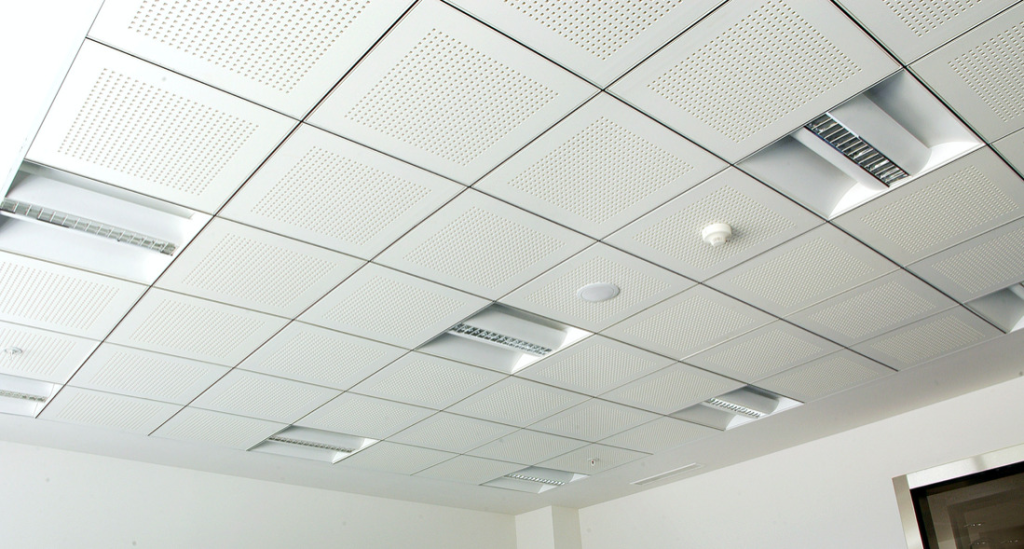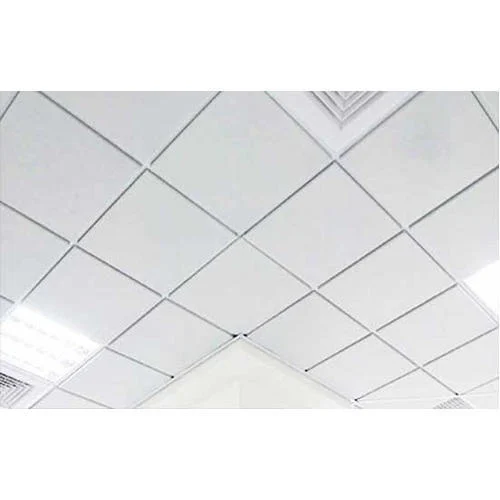When it comes to enhancing the aesthetics and functionality of your interior spaces, Gypsum Board Ceiling Tile offer a sophisticated and practical solution. These tiles, often known for their durability and versatility, can transform any room while providing excellent performance. Whether you’re renovating an old space or designing a new one, understanding the benefits, installation, and maintenance of gypsum board ceiling tiles can help you make informed decisions and achieve the desired results.

What Are Gypsum Board Ceiling Tiles?
Gypsum Board Ceiling Tiles are ceiling panels made from gypsum, a naturally occurring mineral. These tiles are often used in both residential and commercial settings to create smooth, clean, and visually appealing ceilings. Gypsum board, also known as drywall or plasterboard, is a popular choice due to its ease of installation, fire resistance, and soundproofing qualities.
Key Features of Gypsum Board Ceiling Tiles
- Durability: Gypsum board ceiling tiles are sturdy and long-lasting, making them a reliable choice for various applications.
- Fire Resistance: Gypsum is naturally fire-resistant, which helps improve the fire safety of a building.
- Soundproofing: Gypsum board tiles offer excellent sound insulation, reducing noise transmission between rooms.
- Aesthetic Appeal: These tiles provide a smooth and even surface that can be painted or textured to match your decor.
- Ease of Installation: Gypsum board ceiling tiles are relatively easy to install, making them a popular choice for both DIY enthusiasts and professionals.
Read too: Striped Schoolhouse Ceiling Light Fixtures: Unveiling the Timeless Charm
Benefits of Gypsum Board Ceiling Tiles
Gypsum Board Ceiling Tiles offer several advantages that make them a popular choice for both residential and commercial spaces. Here’s a closer look at their benefits:
1. Enhanced Aesthetics
Gypsum board ceiling tiles provide a sleek and modern look that enhances the overall appearance of a room. They create a smooth and uniform surface, which can be painted or finished in various ways to match your interior design.
2. Improved Fire Safety
One of the standout features of gypsum board is its fire-resistant properties. Gypsum contains water in its crystalline structure, which helps to slow down the spread of fire. This makes gypsum board ceiling tiles an excellent choice for improving the fire safety of your home or business.
3. Sound Insulation
Gypsum board ceiling tiles are effective at reducing noise between rooms. Their dense and solid structure helps to absorb and block sound, providing a quieter and more comfortable environment.
4. Cost-Effective
Compared to other ceiling materials, gypsum board ceiling tiles are relatively affordable. Their cost-effectiveness, combined with their durability and ease of installation, makes them a popular choice for many homeowners and businesses.
5. Low Maintenance
Gypsum board ceiling tiles are easy to maintain. They can be cleaned with a damp cloth or mild detergent, and any damage can often be repaired with a simple patching process. This low-maintenance quality contributes to their long-term appeal.
Types of Gypsum Board Ceiling Tiles
There are several types of gypsum board ceiling tiles available, each offering unique features and benefits. Understanding the different types can help you choose the best option for your needs.
1. Standard Gypsum Board Tiles
These are the most common type of gypsum board tiles. They are typically used for basic ceiling applications and provide a smooth, even surface that can be painted or textured.
2. Acoustic Gypsum Board Tiles
Acoustic gypsum board tiles are designed to enhance soundproofing in a room. They have special properties that help to absorb and reduce noise, making them ideal for spaces where sound control is important, such as offices or home theaters.
3. Fire-Resistant Gypsum Board Tiles
These tiles offer enhanced fire resistance, making them suitable for applications where fire safety is a priority. They are often used in commercial buildings and areas with strict fire safety regulations.
4. Moisture-Resistant Gypsum Board Tiles
Moisture-resistant gypsum board tiles are designed for use in areas with high humidity, such as bathrooms or kitchens. They are treated to resist moisture and prevent mold growth, ensuring durability and longevity in challenging environments.
How to Install Gypsum Board Ceiling Tiles
Installing gypsum board ceiling tiles can be a straightforward process, especially if you follow the correct steps and use the right tools. Here’s a step-by-step guide to help you with the installation:
1. Prepare the Area
Before installation, ensure that the ceiling surface is clean, dry, and free from any debris. Remove any existing ceiling tiles or fixtures that may obstruct the installation process.
2. Measure and Cut Tiles
Measure the dimensions of the ceiling and cut the gypsum board tiles to fit the space. Use a straightedge and utility knife to make clean, accurate cuts.
3. Install the Ceiling Grid
For a suspended ceiling, install a metal grid system that will support the gypsum board tiles. Follow the manufacturer’s instructions to ensure proper alignment and stability.
4. Attach the Tiles
Place the gypsum board tiles into the ceiling grid or directly onto the ceiling surface, depending on your installation method. Secure the tiles using appropriate fasteners, such as screws or adhesive, ensuring that they are properly aligned and level.
5. Finish and Paint
Once the tiles are installed, apply joint compound to any seams or joints and sand them smooth. Prime and paint the tiles as desired to achieve the final finish.
6. Install Fixtures
Reinstall any ceiling fixtures or fittings, such as lights or fans, once the tiles are securely in place and finished.
Maintenance and Care for Gypsum Board Ceiling Tiles
Maintaining gypsum board ceiling tiles is relatively simple, but regular care can help prolong their lifespan and keep them looking their best.
1. Regular Cleaning
Dust and dirt can accumulate on the surface of gypsum board ceiling tiles. Use a soft, dry cloth or a vacuum with a brush attachment to gently clean the tiles. For more stubborn stains, use a mild detergent and a damp cloth, but avoid excessive moisture.
2. Inspect for Damage
Periodically inspect your ceiling tiles for any signs of damage, such as cracks or dents. Address any issues promptly to prevent further damage and maintain the appearance of the tiles.
3. Repair Damage
Minor damage to gypsum board ceiling tiles can be repaired with joint compound and paint. For more significant damage, you may need to replace the affected tiles or seek professional assistance.
4. Monitor Humidity Levels
In areas with high humidity, such as bathrooms or kitchens, ensure that moisture levels are controlled to prevent mold growth and damage to the tiles. Use exhaust fans or dehumidifiers as needed.
Conclusion
Gypsum Board Ceiling Tile offer a practical and stylish solution for enhancing the look and functionality of your interior spaces. With their durability, fire resistance, and soundproofing qualities, these tiles are a popular choice for both residential and commercial applications. By understanding the benefits, types, and installation process of gypsum board ceiling tiles, you can make informed decisions and achieve a beautiful and functional ceiling in your home or business. Proper maintenance and care will help ensure that your ceiling tiles remain in excellent condition for years to come.
